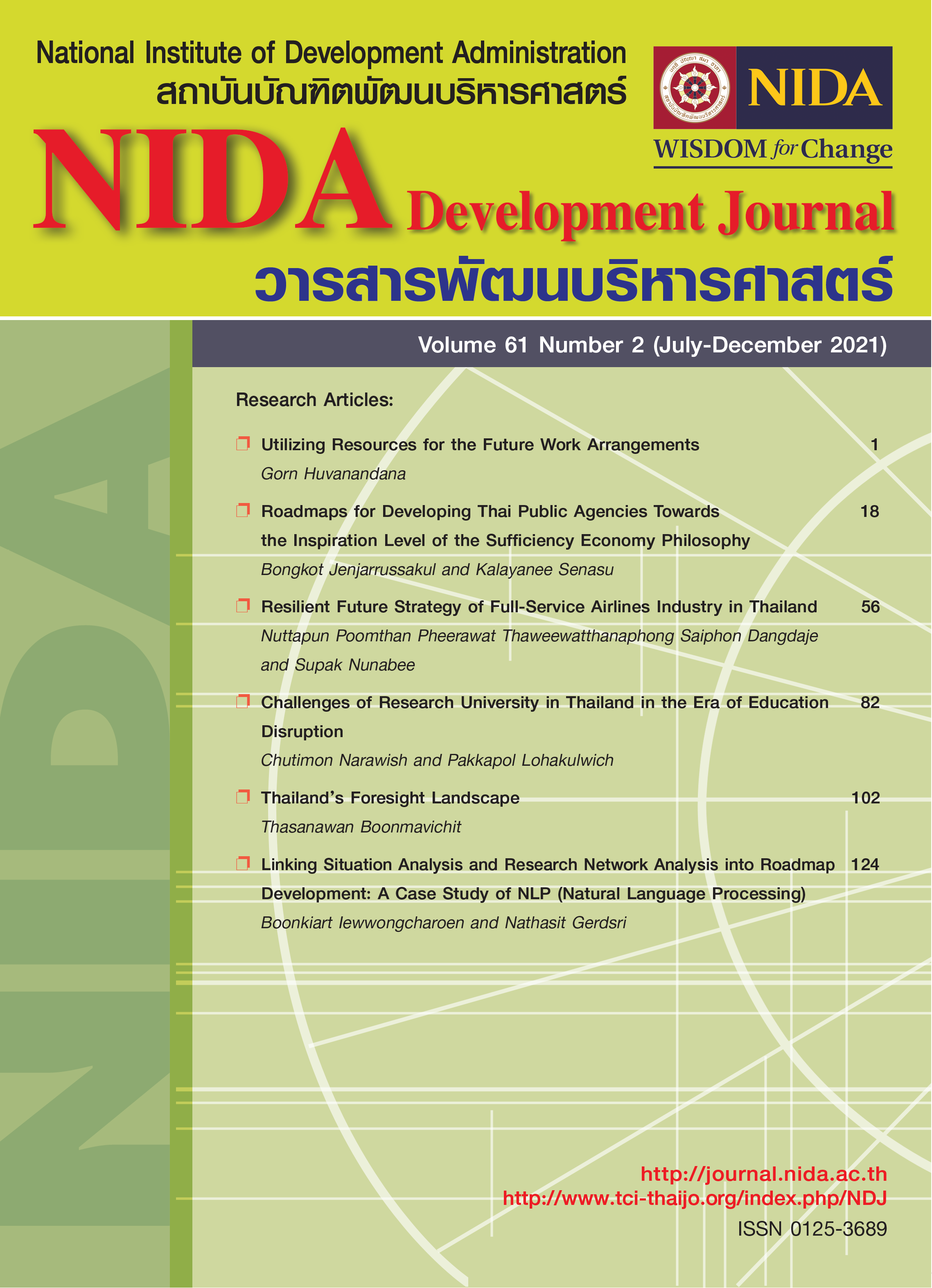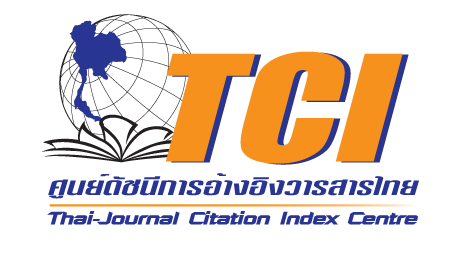Resilient Future Strategy of Full-Service Airlines in Thailand
Keywords:
Aviation Business, Full-service Airlines, Resilient Future StrategyAbstract
Aviation business is an air transport business which constitutes an important transportation infrastructure for tourism and commerce businesses. Moreover, aviation business is the first component of the aviation industry in the passenger and cargo transportation services.
In the future, aviation business especially full-service airlines may face various business drivers and uncertainties such as economy, political stability, aging society, renewable energy, and cutting-edge technology.
Furthermore, the passenger demand and the supply chain constitute another main reason for the aviation industry to adapt to these changing situations.
Therefore, the study of the contexts, trends, drivers, and uncertainties impacting full-service airlines in Thailand is used to analyze the scenarios and the future business opportunities for the formulation of resilient future strategy of the full-service airlines in Thailand consistent with the diverse needs of passengers. The strategy of Value Proposition to consumers, Open Business Model, and Business Model Canvas are important to change and develop an organization's potential in response to the business context to ensure stable and sustainable business operation.
References
Airports of Thailand Public Company Limited. (2019). Air traffic report 2019.
Capoccitti, S., Khare, A., & Mildenberger, U. (2010). Aviation industry-mitigating climate change impacts through technology and policy. Journal of technology management & innovation, 5(2), 66-75.
Chesbrough, H. W. (2007). Why companies should have open business models. MIT Sloan management review, 48(2), 22.
Hasan, M. A., Mamun, A. A., Rahman, S. M., Malik, K., Al Amran, M., Uddin, I., Khondaker, A. N., Reshi, O., Tiwari, S. P., & Alismail, F. S. (2021). Climate change mitigation pathways for the aviation sector. Sustainability, 13(7), 3656.
Hiltunen, E. (2006). Was it a wild card or just our blindness to gradual change. Journal of Futures Studies, 11(2), 61-74.
Holloway, S. (2016). Straight and level: practical airline economics. Routledge.
International Air Transport Association. (2018). Future of the airline industry 2035 (URL: https://www. iata. org/policy/Documents/iata-future-airline-industry. pdf, Issue.
International Civil Aviation Organization. (2019). Annual Reports of the Council 2019.
Kan, S., Chung, D., & Chung, G. (2019). Customer Experience Transformation in the Aviation Industry: Business Strategy Realization through Design Thinking, Innovation Management, and HPT. Performance Improvement, 58(1), 13-30.
Kiatnakin Phatra. (2020). ทศวรรษถัดไปของไทย ธุรกิจโตอย่างไร เมื่อคนไทยกว่า 40% เข้าสู่วัยเกษียณ.
KPMG. (2016). Growth and Uncertainty : Highs and lows in the Aerospace and Defense sectors. kpmg.com
Lawton, T., Rajwani, T., & O'Kane, C. (2011). Strategic reorientation and business turnaround: the case of global legacy airlines. Journal of Strategy and Management, 4(3), 215-237.
Lohmann, G., & Koo, T. T. (2013). The airline business model spectrum. Journal of Air Transport Management, 31, 7-9.
Nhamo, G., Dube, K., & Chikodzi, D. (2020). Counting the cost of COVID-19 on the global tourism industry. Springer.
Osterwalder, A., & Pigneur, Y. (2010). Business model generation: a handbook for visionaries, game changers, and challengers (Vol. 1). John Wiley & Sons.
Pereira, B. A., & Caetano, M. (2017). BUSINESS MODEL INNOVATION IN AIRLINES.
International Journal of Innovation, 5(2), 184-198.
Peterson, G. D., Cumming, G. S., & Carpenter, S. R. (2003). Scenario planning: a tool for conservation in an uncertain world. Conservation biology, 17(2), 358-366.
Riwo-Abudho, M., Njanja, L. W., & Ochieng, I. (2013). Key success factors in airlines: Overcomingthe challenges.
Roongruengratanakul, P. (2019). Business model for elderly daycare service.Thammasat University.
Ryan, C., & Trauer, B. (2012). Aging populations: trends and the emergence of the nomad tourist. In Global tourism (pp. 523-541). Routledge.
Ryley, T., Baumeister, S., & Coulter, L. (2020). Climate change influences on aviation: A literature review. Transport Policy, 92, 55-64.
Sathapongpakdee, P. (2021). แนวโน้มธุรกิจ/อุตสาหกรรมปี 2564-2566: บริการขนส่งทางอากาศ. Krungsri Research. https://www.krungsri.com/th/research/industry/industry-outlook/logistics/air-transport/IO/io-Air-Transport-21
Surawattananon, N., Reancharoen, T., Prajongkarn, W., Chunanantatham, S., Simakorn, Y., & Gultawatvichai, P. (2021). Revitalising Thailand’s tourism sector: In search of enablers for future sustainability” B. o. Thailand.
Suwansingha, N., Ketkeaw, M., & Jangsiriwattana, T. (2020). Factors affecting the perceptions of senior citizens toward airline services technology: A case study of senior citizens in Thailand.
Urban, M., Klemm, M., Ploetner, K. O., & Hornung, M. (2018, 2018/08/01/). Airline categorisation by applying the business model canvas and clustering algorithms. Journal of Air Transport Management, 71, 175-192.
The Civil Aviation Authority of Thailand. (2019). State of Thai aviation industry 2019.
Zhang, A., & Zhang, Y. (2018). Airline economics and finance. The Routledge Companion to Air Transport Management, 171-188.
Downloads
Published
How to Cite
Issue
Section
License
Copyright (c) 2023 NIDA Development Journal

This work is licensed under a Creative Commons Attribution-NonCommercial-NoDerivatives 4.0 International License.





